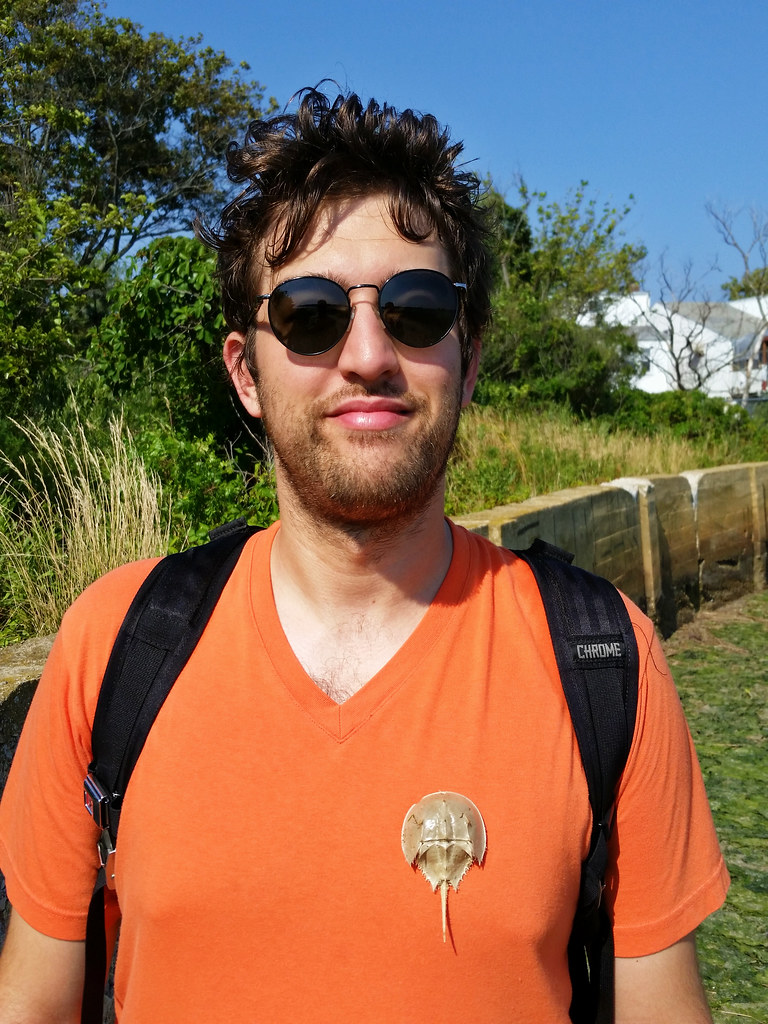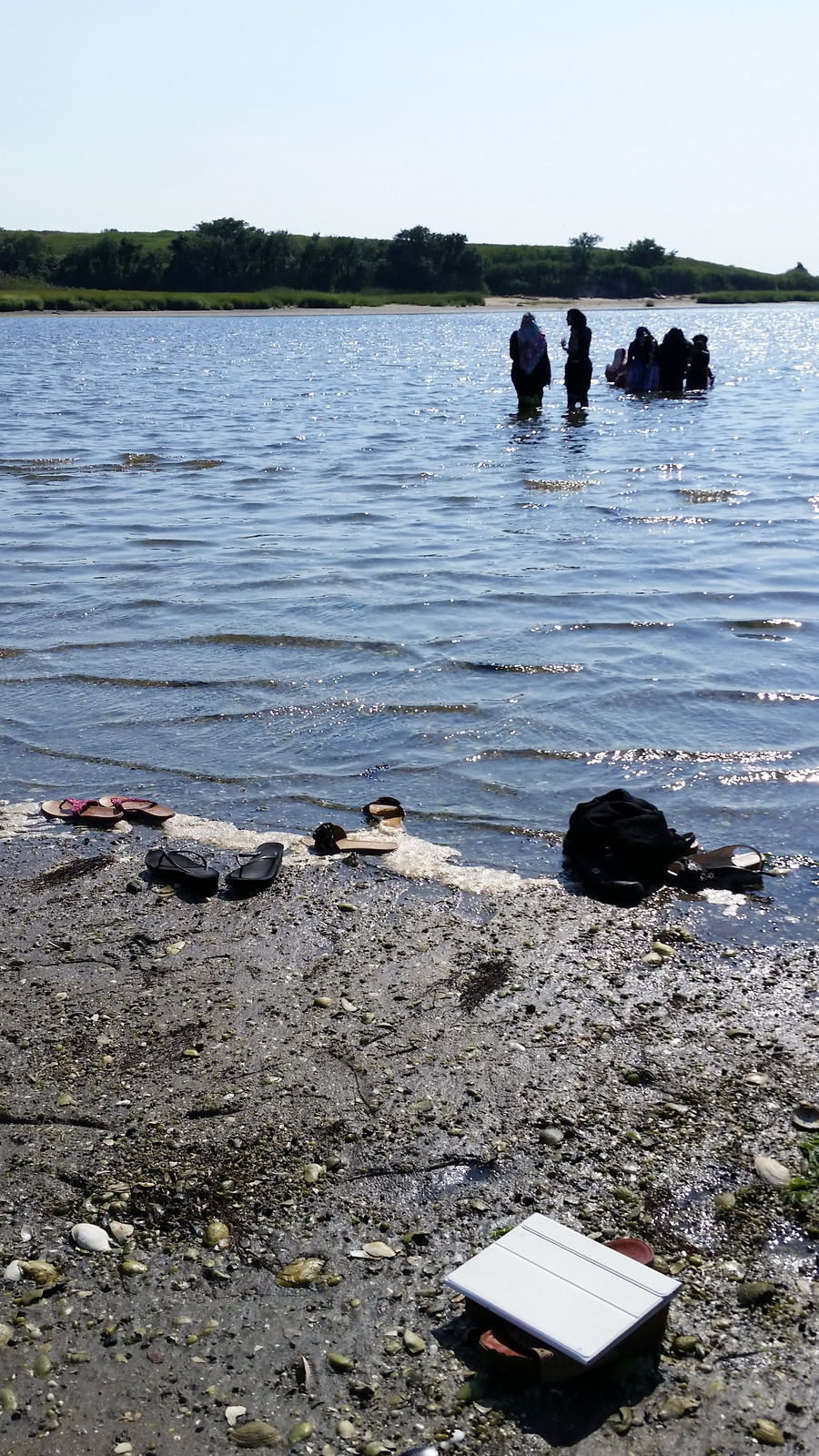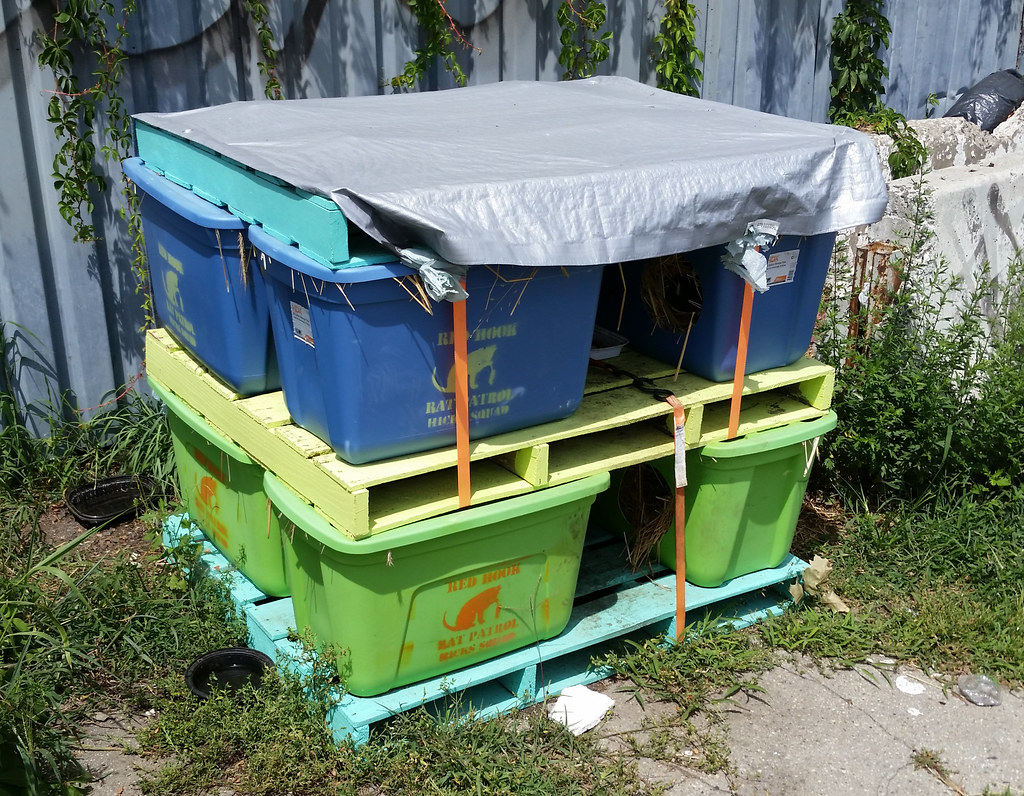
Everyone I saw in the water at the park today was fully clothed; the women at left are wearing hijabs.
The hill in the background is the old Edgemere Landfill.

Jamaica Bay is much more popular with boaters than bathers — in fact, I don't think I had ever seen a single person taking a dip in the bay before — but there were almost twenty people hanging out in the water today at Bayswater Point State Park.
If you zoom in, you can just make out the faint skylines of Lower Manhattan and Midtown in the distance.
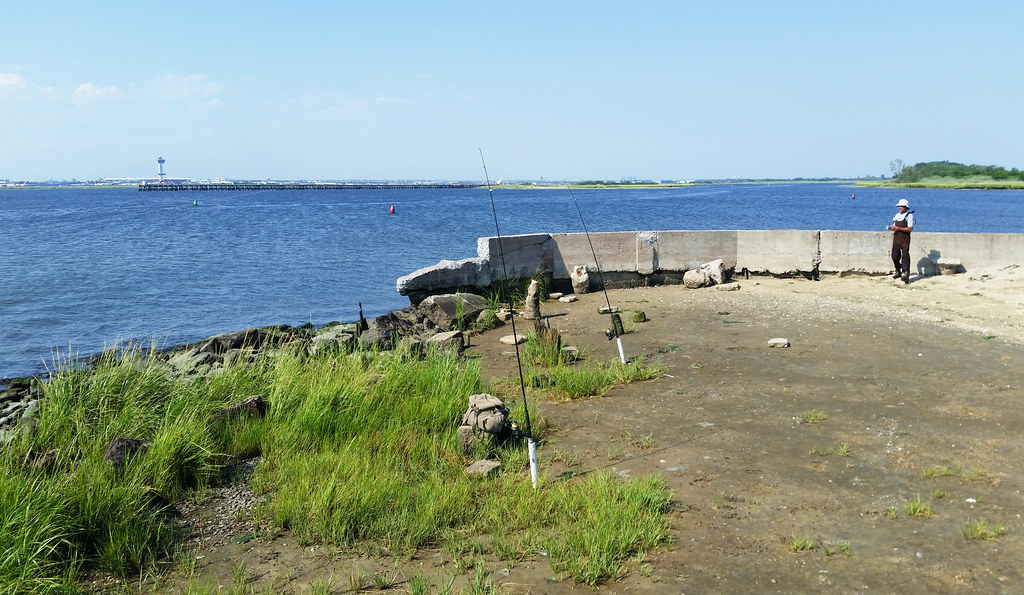
This is Motts Point in Bayswater Point State Park. You can see JFK Airport across the water (zoom in).
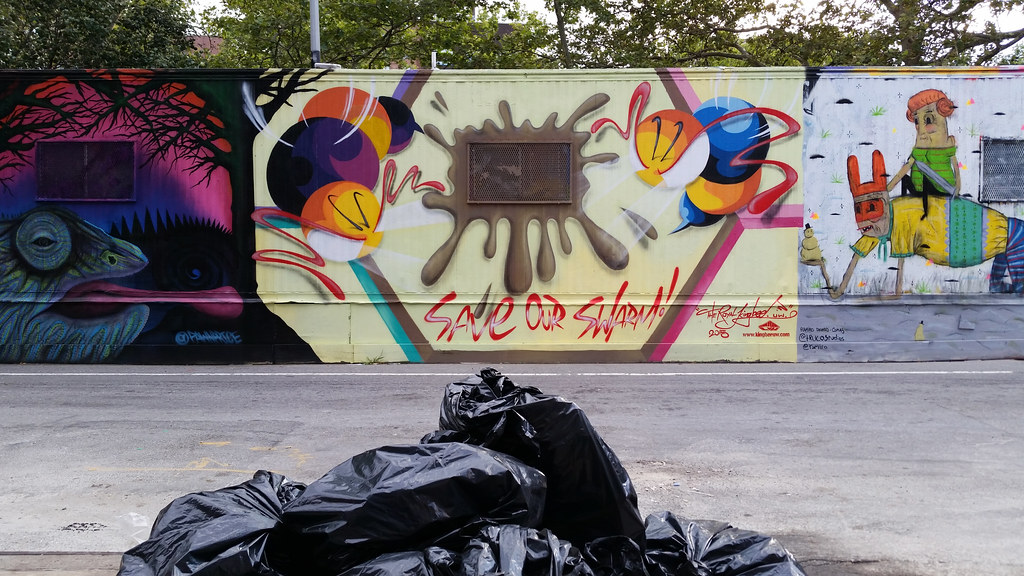
I find the Royal Kingbee making an appearance on the Centre-fuge art trailer.
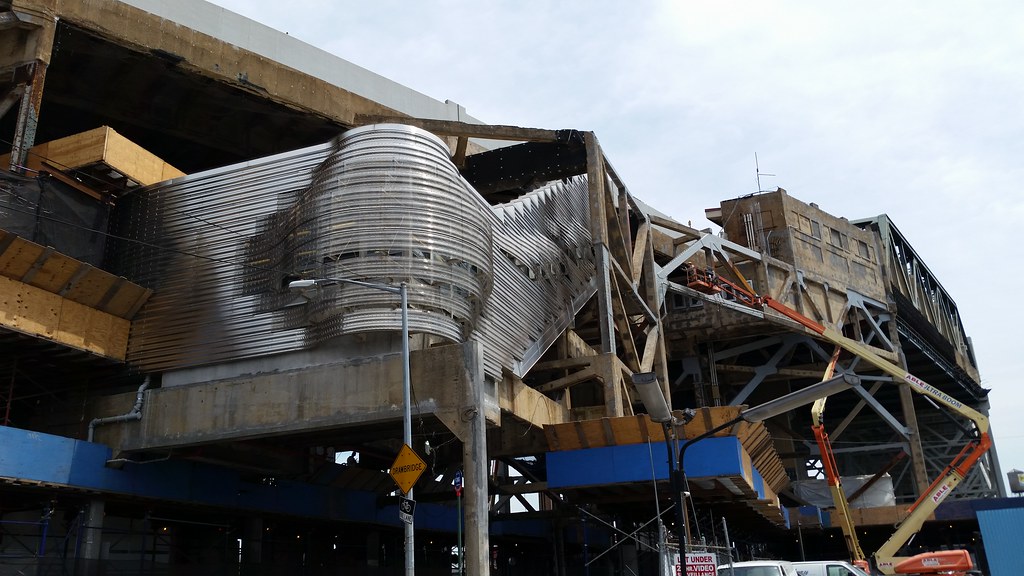
At 87.5 feet above street level, the Smith-9th Streets station, served by the F and G trains, is the highest subway station in the world, according to the MTA. (191st Street in Upper Manhattan, on the 1 line, is the city's deepest station, 180 feet below ground.)
From June 2011 until April 2013, Smith-9th was closed while it was being renovated (by a team of space aliens, it would appear). The station is open and functional now, but work on the exterior continues, as you can see.
UPDATE: The renovations are complete! Here's a look at the finished station.
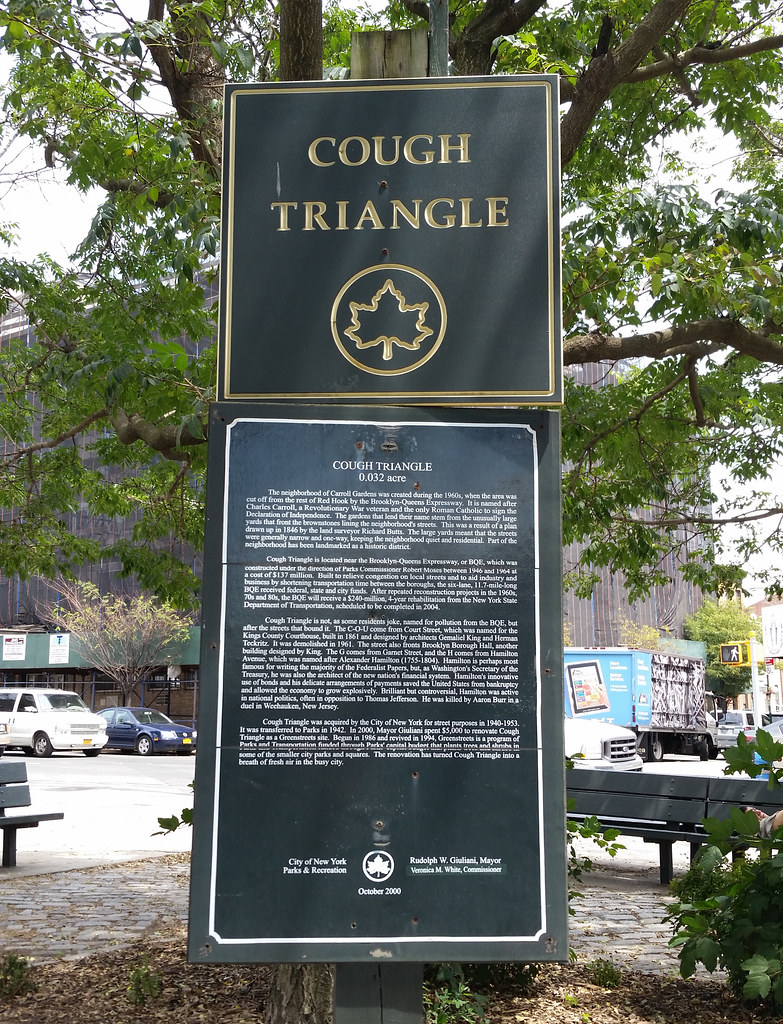
According to the Parks Department:
Cough Triangle is not, as some residents joke, named for pollution from the BQE, but after the streets that surround it. The C-O-U come from Court Street, which was named for the Kings County Courthouse, built in 1861 and designed by architects Gemaliel King and Herman Teckritz. The building was demolished in 1961. The G comes from Garnet Street, and the H comes from Hamilton Avenue, which was named after Alexander Hamilton (1755-1804).Only former Parks Commissioner Henry Stern could have come up with such a weird name in such a weird way. (And, indeed, the Parks webpage quoted above confirms that this tiny triangle was turned into a green space in 2000, during Mr. Stern's second stint as commissioner.)
Having a good feel for his wacky and mordant sense of humor at this point, I feel comfortable saying, despite the Parks Department's claim to the contrary, that Mr. Stern was almost certainly thinking about the air pollution from the adjacent, traffic-clogged Brooklyn-Queens Expressway (BQE) when he named Cough Triangle.
I can picture it now: He's looking at the triangle on a map, trying to come up with an interesting name. (He's never been one to settle for a run-of-the-mill appellation, not even for a minuscule piece of parkland like this.) After noting the site's proximity to the exhaust-spewing BQE and the "miasmic, fetid" Gowanus Canal, he turns his focus to the names of the surrounding streets, a common source of inspiration for him. Court, Garnet, Hamilton. Court, Garnet, Hamilton. And then, to his great delight, it hits him. Five simple letters that are not only an authentic product of the local street nomenclature, but also an oblique jab at the area's questionable air quality. COUGH! Chalk another one up for the maestro.
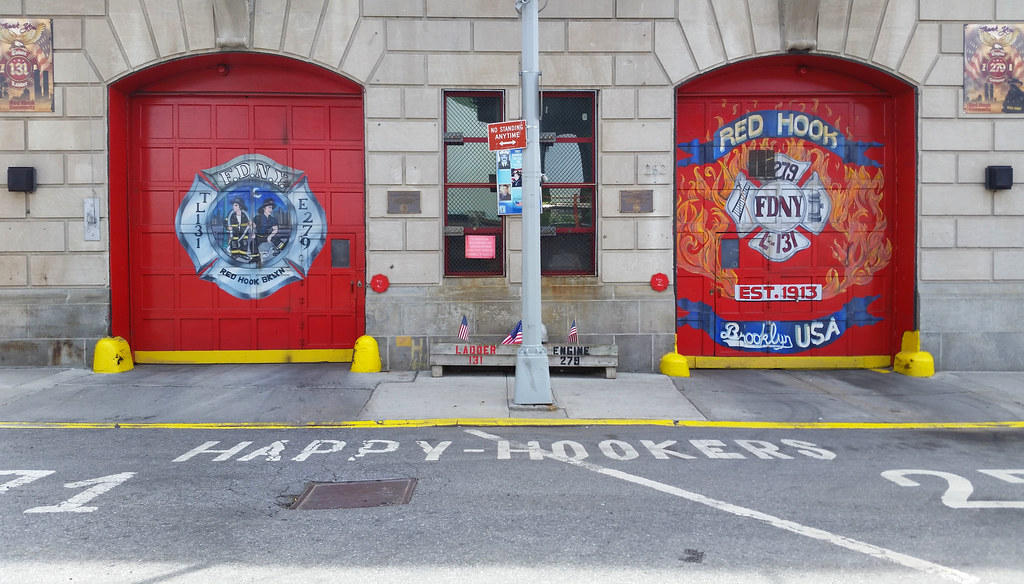
The companies stationed at this Red Hook firehouse, Engine 279 and Ladder 131, have long referred to themselves as the Happy Hookers (Red Hook, hook and ladder — get it?). But the FDNY ordered them to drop the name in 2005, part of a department-wide push to clean up company nicknames following a pair of ugly incidents — a sex scandal and a firehouse brawl — involving companies nicknamed Animal House and Southern Comfort, respectively. (Other "unbecoming" company nicknames called out by a 2005 Department of Investigation report: the Nut House, the Harlem Zoo, 90 Proof, Clown College, and First at the Bush.)
Despite the FDNY's demands, the Happy Hookers refused to remove their nickname from their firehouse door. The name remained there (photo) until 2008, when the FDNY reportedly sent someone out to paint over it. It was long gone by the time I first walked by in 2012; not knowing the companies' nickname, I was puzzled by the accompanying image of two suggestively posed firefighters that remained (and still remains) on the door.
I don't know if the FDNY has loosened up in recent years or if the firehouse just decided to defy the higher-ups once again, but, as you can see, the Happy Hookers name is now prominently painted on the street in front of the firehouse, and it also appears on a pair of plaques honoring the 2013 centennials of Engine 279 and Ladder 131.
(Also visible above, near the middle of the photo, is 9/11 memorial #73.)
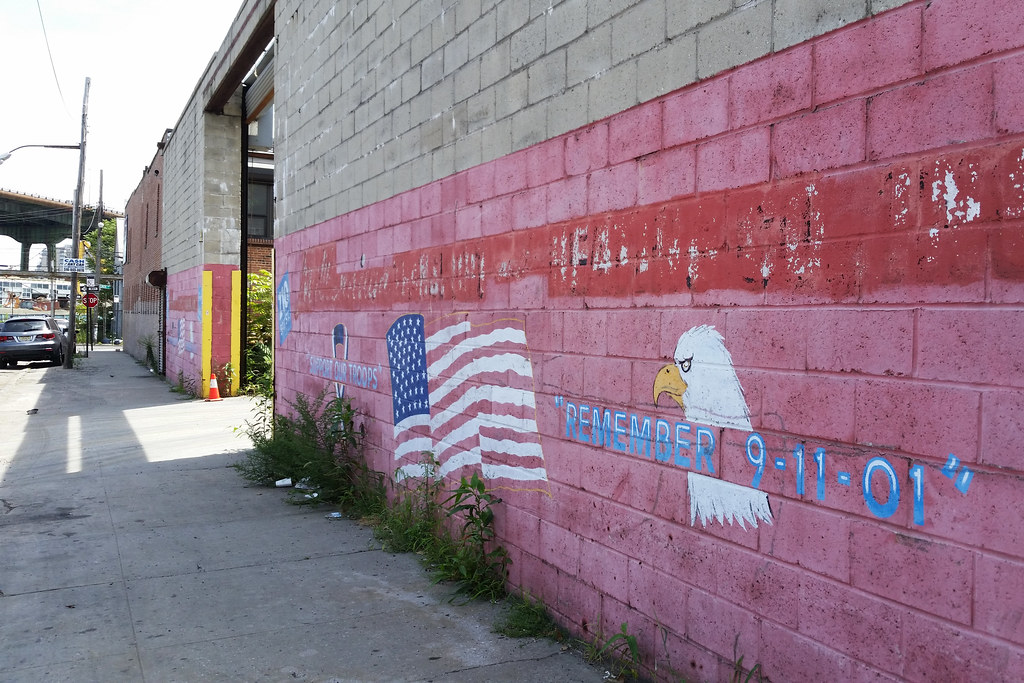
The same images are painted on the other side of the entrance as well.
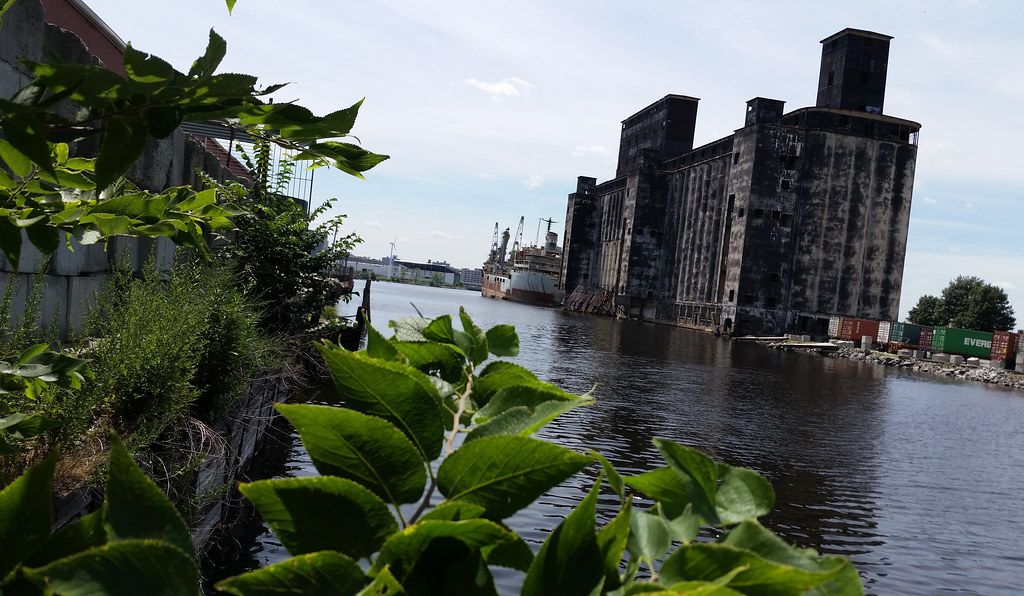
The hulking structure looming above, blackened with age, is a two-million-bushel grain elevator opened here on the Henry Street Basin in 1922 as part of the New York State Barge Canal's Gowanus Bay terminal. The elevator was built to facilitate the transfer of grain from barges (arriving via the canal system) to ocean-going steamships.
While the canal system and the elevator were "magnificent works of engineering", according to an expert quoted by the NY Times's Christopher Gray in his piece about the elevator, they were also "magnificent boondoggles" that failed in their attempt to recapture grain and other freight traffic that had been lost to railroads in the years since 1880. The elevator was deactivated in 1965 and has been vacant for half a century now.
You can see an old photo of the elevator and its since-demolished conveyor structures here, and you can check out some current-day images of the abandoned interior here.
(Visible in the background [zoom in] is the city's first large-scale wind turbine, which generates power for the Sims Municipal Recycling facility in Sunset Park.)
UPDATE (Mar. 14, 2017): R.I.P. Christopher Gray, "the David Letterman of architectural history". Your Streetscapes column has long been an invaluable source of information and inspiration. Thank you for all that you've done!

This is either a Sunbeam Alpine or a Sunbeam Tiger (the V8 version of the Alpine). I had never heard of these cars before, but they've had some impressive movie and television roles. The first James Bond car, as seen in 1962's Dr. No, was a blue early-'60s Alpine, and Maxwell Smart drove a red '65 Tiger during the first four seasons of the TV series Get Smart, including at the beginning of the opening credits for the first two seasons. An Alpine apparently had to stand in for the Tiger on Get Smart in some instances; because of its smaller engine, only the Alpine had enough room under the hood to accommodate the car's pop-up machine gun.
I'm walking every street in New York City.
This is the counterpoint to my walk across the US. Instead of seeing a million places for just a minute each, I'm going to spend a million minutes exploring just one place. By the time I finish walking every block of every street in all five boroughs, I'll have traveled more than 8,000 miles on foot — all within a single city. Details!
Email me at matt@imjustwalkin.com
Subscribe to my email list
Maps: Progress | Photos
Your donations allow me to keep walking full-time. If you think what I'm doing is valuable and you'd like to offer some support, I would be very grateful. On the other hand, if you think I'm a worthless bum, feel free to email me and tell me to get a job, bozo. Both are excellent options!

